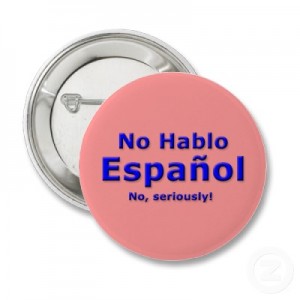Costa Rica Teaching News – One of the more intimidating aspects of teaching English abroad is the language barrier. Without basic elements of the local language, things like buying groceries, ordering food in a restaurant and securing a date for Friday night can be tricky. This problem, however, should not translate to the ESL classroom.
 The Spanish question is one of the most common I receive. For those that don’t have experience teaching English as a second language, it is a natural thought process. The concept of a student, who doesn’t speak English, learning from a teacher, who doesn’t speak their language, certainly looks challenging on the surface. With a change in perspective, though, we can see why this is actually the ideal situation.
The Spanish question is one of the most common I receive. For those that don’t have experience teaching English as a second language, it is a natural thought process. The concept of a student, who doesn’t speak English, learning from a teacher, who doesn’t speak their language, certainly looks challenging on the surface. With a change in perspective, though, we can see why this is actually the ideal situation.
The best method to learn a language is to be totally and completely immersed in that language. This is why many non-Spanish speakers arrive to Costa Rica and are easily able to pick up at least the very basic elements. When you live here, you are forced to interact in Spanish. For Costa Ricans, this full immersion only exists in their ESL classroom.
One of the very first things your TESOL instructor will tell you is that the target language is the only language to be used in the classroom. There are many reasons for this, but the most important being that in order to learn, improve, or perfect a language, one must be able to also think in that language. If the effort is made to take the students’ native tongue out of the equation, the learning ability is increased immensely.
Not being able to translate for students is a constant worry for potential teachers. This is, of course, both a non-issue and a big ESL ‘no-no’. While translation may help a student understand a word or two, it is not a recognized learning technique. While also disrupting the target language focus, translation simply doesn’t work based on the logistics of the language: English does not function the same as Spanish.
This is a common point of perplexity for many. I am routinely asked by English learners and native Spanish speakers how it is I expect them to learn English without translation. My simple answer to this query is: What language was Spanish translated from for you to learn?
We all learn our native language without translation. No native English speaker learned English via translation from another language. Why should learning a second, third or fourth language be any different?
This is the challenge for ESL instructors. Students will ask. They will beg. But the answer needs to be ‘no’. Translation is any easy way out for many awkward moments in the classroom. It’s not easy to stay the course when there are ten confused faces staring at you with no idea what you’ve just said. What separates the good from great ESL instructors, though, are those that can get any message across without translating.
Do you need to speak Spanish to teach English in Costa Rica? You will need to learn at least some to live in Costa Rica. To teach English in Costa Rica not only do you not need to speak Spanish, you shouldn’t even try.
If you want more information about teaching English in Costa Rica or getting your TEFL or TESOL certificate in Costa Rica feel free to contact Andrew at the Global TESOL College or email andrew@globaltesolcostarica.com
Originally from Toronto, Canada, Woodbury is the academic director of Global TESOL College Costa Rica , a contributor to radio program This Week in Costa Rica (http://thisweekincostarica.com/), and an independent writer based in Costa Rica.

